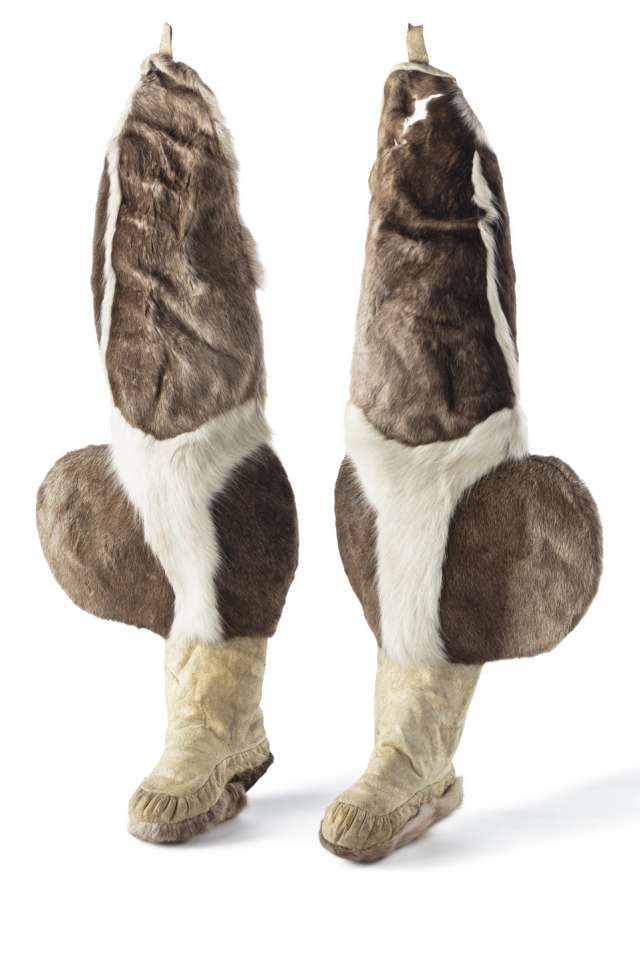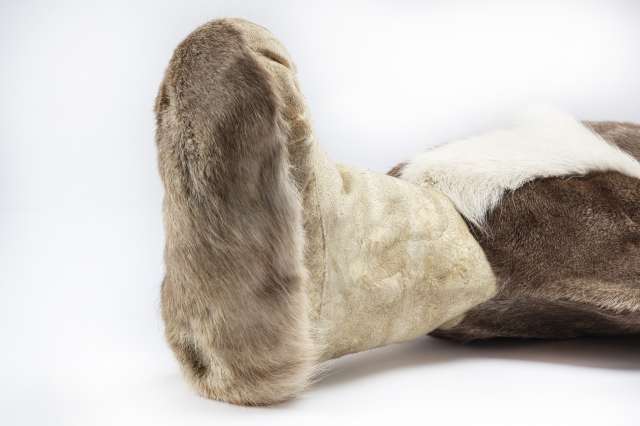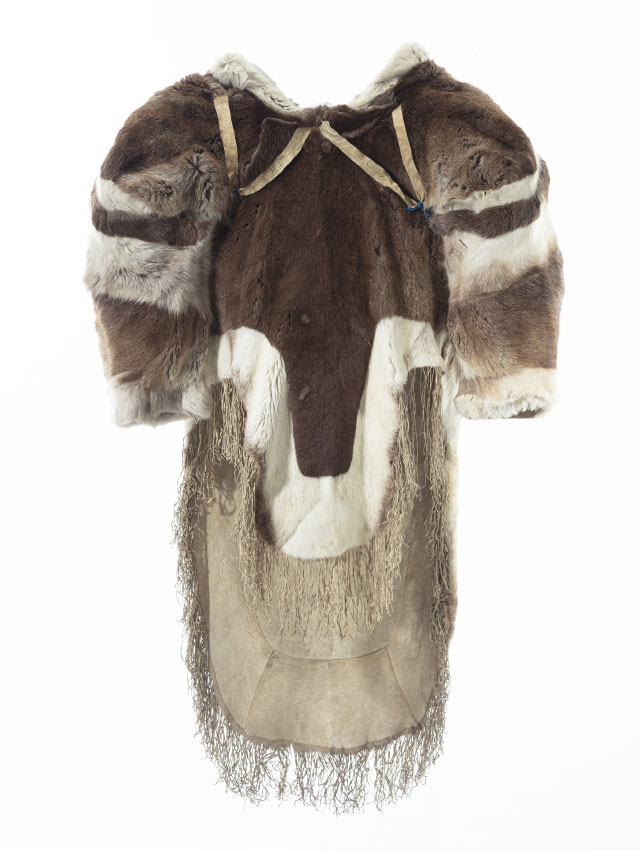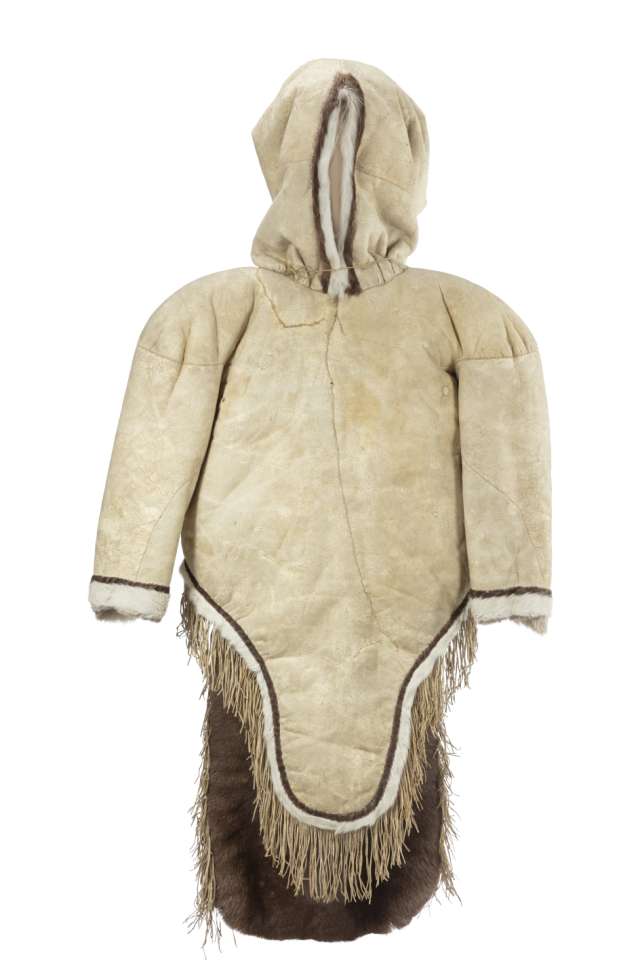Deborah Qaunaq: There, this is me, Uirngut Qaunnaq Deborah, Deborah Qaunnaq.
I want to speak about this. People have wondered
what it is [Deborah points at a protuberance on the side of one boot]. Why is that there? It was used when
going out on the land in the winter, while travelling.
When you were carrying an infant up front, this was used to put the mittens in
or anything as valuable while travelling
by dog-team. It was used as a bag. Avalluq [in inuktitut], it's called avalluq.
This was very useful back then, and now we
wonder : Why was it that way? What is this?
This is a bag. Fur mittens. If you were holding an infant upfront
while travelling in the winter, it was used to store mittens or anything valuable —
matches or anything that needed to be kept clean while travelling. It was used as a bag.
Avalluq, it's called an avalluq. At that time, our ancestors,
our great ancestors used this as an essential. It was for adults
not for children, for adults with children. This was very useful.
Avalluq. They could also have it just this way [Deborah shows a straight line along the boot, without the pocket],
like pants. Pants up to this point [Deborah points at her hip] and then attached to another pair of pants.
There is a missing piece here [Deborah points at the top of the boots]. There is no string to strap it on to.
It's missing. There should be a string up to where it is to be strapped.
This is an avalluq, a bag for mittens used back then. Now it's no longer in use.
It isn't used at all today. At that time only,
for our ancestors, it was very useful.
When travelling with a child, it was made for women. When travelling over the land,
it was used by women with an infant during the winter.
I have spoken a little bit about it. Why is this made like that?
This is to store mittens in. Wearing a caribou skin parka and carrying a child,
when the woman was going to place the child up front,
she would place her mittens there and place the child up front.
I've never used this myself. I'm too young [laugh].
I've never used it. But there should be an amauti [in inuktitut]... It's for women.
It seems like an amauti should go with it. Thank you for
allowing us to know more. The caribou skins were the warmest ones back then
to be worn as clothing. They had to be softened.
They were the main clothes.
In early spring they did not have young thin skins.
The young thin ones were for the inner wear.
Qaliruaq [in inuktitut]. They are called qaliruaq. My mother used to have them.
The young thin skins were used during early spring, not winter.
The young thin skins, as thin as this were used for clothing back then.
They were very practical, lightweight, windproof and warm.
There is none of this anymore. They are no longer used at all.





